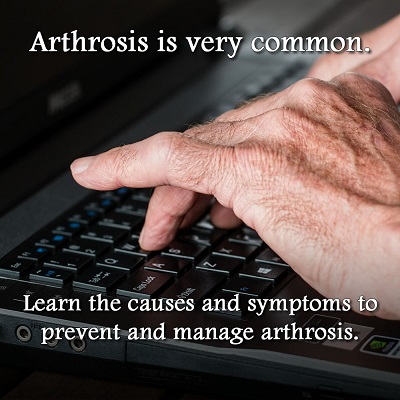 Arthrosis or osteoarthritis is a degenerative disease that most people are likely to develop as they grow older. It can limit your activities, not to mention that you have to deal with chronic pain. This degenerative joint disorder occurs when the cartilage breaks down, usually affecting the hands, knees, hips, and spine.
Arthrosis or osteoarthritis is a degenerative disease that most people are likely to develop as they grow older. It can limit your activities, not to mention that you have to deal with chronic pain. This degenerative joint disorder occurs when the cartilage breaks down, usually affecting the hands, knees, hips, and spine.
While it’s statistically likely to develop OA at some point when you become older, you can still improve your quality of life and minimize your risks. It starts with being aware of the risk factors and causes and recognizing the signs and symptoms.
What Causes Arthrosis?
Arthrosis develops slowly over time, and here are the common causes:
.
- Age – As you age, you develop higher risks of osteoarthritis. It’s more common among women because as you get older, the level of estrogen decreases. This hormone is essential for bone health. You may start to experience the symptoms around the age of 40. At this age, body changes such as weakening of muscles is likely unless steps are taken to counter them.
- Joint injury – Injury due to an accident, extreme workout, and sports can contribute to arthrosis. People who have had joint surgery even years ago are also at risk of developing osteoarthritis.
- Obesity – Weight gain puts more pressure on the joints, especially on the knees, which can increase the risk of osteoarthritis. It also affects metabolism, leading to the development of fatty tissues that can contribute to inflammation.
- Gender – Women are more likely to have osteoarthritis, especially during the menopausal stage. After the age of 50, women tend to gain weight more easily.
- Heredity – Genes may contribute to the increased risk of osteoarthritis. People with family members who have osteoarthritis are more likely to have it too.
- Other related joint diseases – Some other joint diseases like rheumatoid arthritis may increase the risk of osteoarthritis.
Other risk factors include occupation, infection of the joint, and joint malformation. Young adults may also experience early symptoms of osteoarthritis if they engage in repetitive physical activities.
What Are the Symptoms? How Do You Know You Have Arthrosis?
When the cartilage breaks down, the joints begin to rub against each other. You may experience the following symptoms:
- Stiffness of the joint – It means that there is muscle weakness in the joint and limitation of its movement. You may experience it in the morning and after resting or sitting for a long time.
- Tenderness – Any joint injury or damage in the joint may restrict movement.
- Joint pain – The joints feel painful as you move or after you perform an activity.
- Swelling – Causes soreness in the joint due to the inflammation of connective tissues around it.
Other signs of osteoarthritis include cracking sounds in the joints and loss of flexibility.
How Can You Manage the Symptoms of Arthrosis?
Managing symptoms may help to decrease the severity of osteoarthritis. Even though there’s no specific cure for osteoarthritis, you can help to prevent it and mitigate its effects.
Here are some tips on how to manage the risks and symptoms of osteoarthritis:
- Maintain a healthy lifestyle – Your lifestyle affects your health. Eat a balanced diet, get enough sleep, quit smoking, and avoid drinking alcohol.
- Exercise and be physically active – Maintaining a healthy weight is important to prevent unnecessary stress on the joints.
- Protect your joints – Always remember to warm up before exercising or doing physical activity. Taking a complete rest is also vital after an extensive activity to give your body time to heal. Watch your steps when walking, and make sure you have the right posture when lifting and pushing objects.
- Visit a medical professional – It’s important to consult your doctor if you feel that you have osteoarthritis. Early diagnosis can help slow down the progress of OA, along with proper medication and treatment.
- Undergo therapy – A physical or occupational therapy will help you strengthen the muscles around your joints and improve your flexibility. The therapist will guide you on proper exercises and movements that will prevent excessive pressure on your joints. Acupuncture and massage therapy can also be beneficial in reducing pain and inflammation.
Talk to your doctor, who can design a treatment plan that best suits you.






